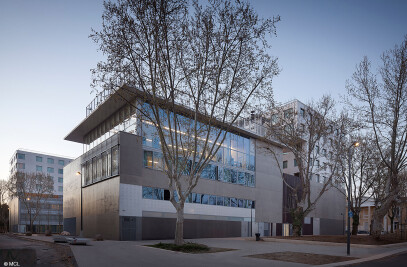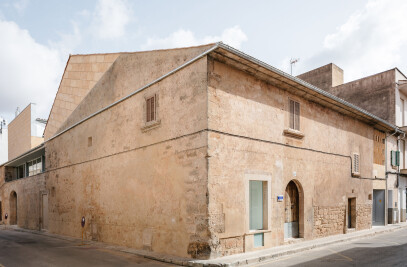“Bayonne Marinadour is the first intervention to be completed in a complex of actions marking the new entrance to the city of Bayonne. The other elements are a park produced by remodelling the approach road to Henri Grenet Bridge and, overlooking it, the built complex of Rivadour. These pieces establish synergies and interrelations, forming a unitary urban complex at the gateway to the historic city. Bayonne Marinadour is an exercise that involves adapting a significant degree of urban density and organizing a complex mixed brief. The volume addresses the extreme density of the brief, arranging the masses around two landscaped courtyards, creating an interplay in height and in full-empty relations to generate the best possible conditions in the shared spaces. Large urban windows open up the courtyards to the outside, to the sun and the river. In section, the project segregates the various uses in different layers: a car park and a shopping centre form the base. Above, independent, are dwellings of multiple types and conditions that vary in floor plan to adapt and optimize the relation with the exterior. The envelopes also follow this logic: the south and east façades, which are most exposed to traffic, are protected from noise by double glazing that formalizes a conservatory terrace with high energy rating. To the west, the volume is broken down and its envelopes are reflective metal: we have to let light and air into the courtyard. On the river side, the horizontal of the terraces follows the geometry of the water. This morphological and volumetric complexity speak of the desire to adapt to the context, and also of the desire to reduce the urban impact of this high built density.” - Josep Lluís Mateo
It is a project of great importance for Bayonne, not just due to its sheer size (some 70.000 m2 of built surface area) but also because it is the new gateway to the city. The brief is divided between two city blocks that contain social and free market housing, a shopping centre, a hotel, a small area of offices and car parks, and the central part that joins the two blocks, channelling the flow of car and pedestrian transit.


































